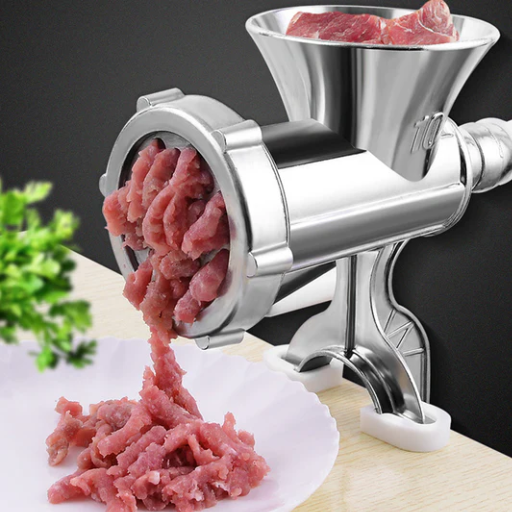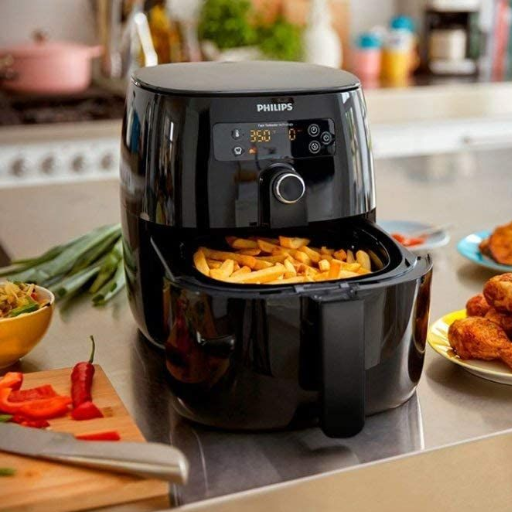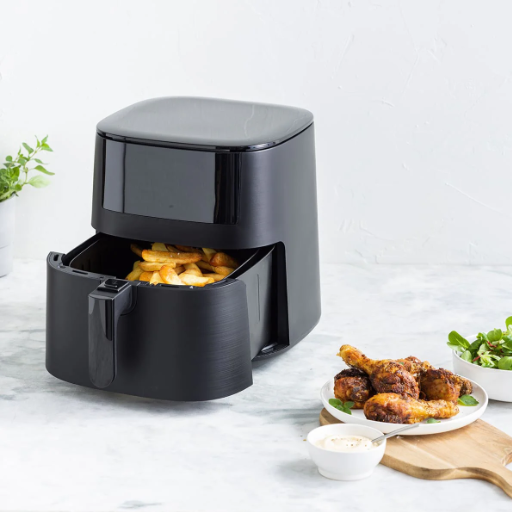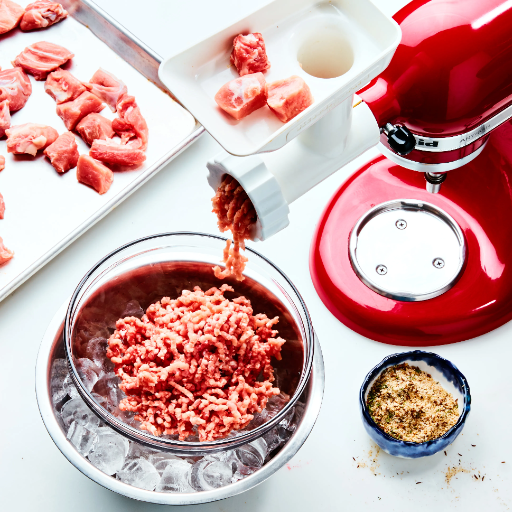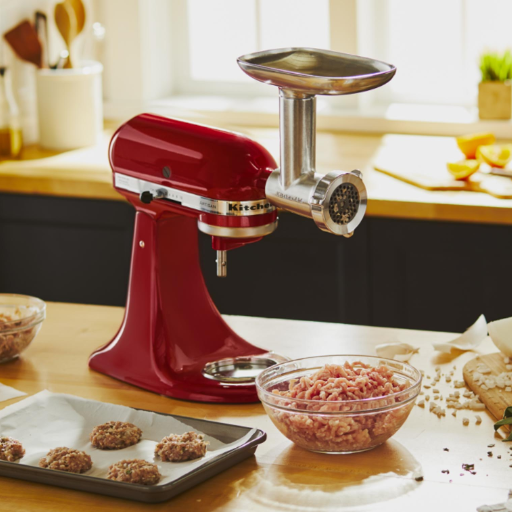Graniteware stock pots are a staple in many kitchens, known for their durability, efficiency, and timeless aesthetic appeal. Whether you’re an experienced chef or a home cook, understanding the key characteristics of these cookware essentials is critical for making informed purchasing and usage decisions. This guide will cover everything from the material composition and manufacturing process of graniteware to its advantages and potential drawbacks. Additionally, we’ll explore practical tips for maintaining these stock pots to ensure a longer lifespan and provide recommendations for selecting the best types based on your cooking needs. By the end of this article, you’ll have a comprehensive understanding of graniteware stock pots and why they remain a popular choice in kitchens around the world.
What Do Customer Reviews Say About Graniteware Stock Pots?

Customer reviews for graniteware stock pots have noted the positive features of the product like its lightweight design, affordable pricing, and superb heat distribution. Several users also highlight the ease of cleaning these pots, making them great for soups, stews, and canning due to the enamel coating’s non-stick properties. There are chipping and scratching concerns of the enamel coating over time with frequent usage and improper care, as some reviews mention. In general, graniteware stock pots are appreciated for their practicality and multifunctional use, as it seems most consumers trust them for doing ordinary cooking chores.
Are Graniteware Stock Pots Durable?
Graniteware stock pots have one big advantage and that is their durability, given appropriate usage and care is provided. Since the enamel is fused to a steel base, it exhibits substantial resistance to rust, stains, and normal wear which makes cooking easy. However, the means can be chipped or cracked if friction is applied or if there is a drastic temperature change. To best preserve the coating of the pot, users are advised against using metal scrubs or abrasive cleaners. If they are dealt with properly, graniteware stock pots can last for years which makes it a superb choice for many cooking jobs.
How Do Users Rate the Stock Pot with Lid Features?
Graniteware stock pots with lids are rated positively among users for their lightweight construction which enables them to distribute heat evenly throughout the pot. Many reviews also appreciate them for being easy to clean and for their durability, provided the pot is well maintained. Praise is also given to the lids for securely fastening onto the pot, retaining heat and moisture whilst cooking. However, some users argue that overuse or improper use may cause chipping of the enamel surface as well as a lack of venting in the lids to let steam escape. In short, for ease of use and reliability, they are an economical choice for all types of kitchens.
What Are the Common Complaints in Customer Reviews?
The frequently expressed dissatisfaction with graniteware stock pots ranges from issues with the enamel coating, which can chip or crack over time, primarily due to improper use or exposure to thermal shock. Some users indicate that the enamel finish isn’t very tough and results in rust formation when the metal below becomes exposed. Moreover, clients have also raised issues with venting as there is no way to vent the lids which can result in an accumulation of too much pressure which makes it strenuous to handle while cooking. Other people mention that even though the pots are lightweight, this tends to make them feel less durable than their heavier counterparts. However, the pots, with all their disadvantages, are still the most affordable for many kitchens considering they are properly cared for.
Are There Any Chemical Concerns with Graniteware Stock Pots?

Graniteware stock pots are generally considered safe for cooking because they are made using an enamel coating over a steel or iron core, which prevents direct contact between the metal and food. The enamel is inert, meaning it does not react with acidic or alkaline foods, making it a non-chemical-leaching option. However, if the enamel becomes chipped or cracked, the underlying metal may potentially leach elements like iron or carbon into food, which could be a concern for individuals with specific dietary restrictions or sensitivities. Proper care and handling of the pots are essential to maintain the integrity of the enamel and ensure safe use.
Is the Porcelain Enamel Coating Safe?
Yes, the porcelain enamel is relatively safe for cooking purposes. The setting is done by fusing a metal base to a non-porous surface. Such a surface does not interact chemically with food. The glass is resistant to both the acids and the alkaline substances; thus, ensuring no harmful chemicals are leaching into the food. The problems arise when the porcelain enamel has been chipped or cracked, as this would expose the underlying base metal and permit the leaching of core elements such as iron, carbon, and possibly traces of nickel if the base core was poorly designed. Using the product with the utmost care, such as refraining from using metallic utensils or subjecting porcelain to sudden temperature changes, will assist in preserving the integrity of porch-lined surfaces, ensuring constant safety and efficacy.
Do Graniteware Stock Pots Contain PTFE or PFOA?
No, Graniteware stock pots do not contain PTFE or PFOA. These pots are made by fusing a porcelain enamel coating to a steel core, creating a non-porous and inert surface. The absence of PTFE (Polytetrafluoroethylene) and PFOA (Perfluorooctanoic acid) ensures that these materials are considered safe for cooking, as they do not release harmful chemicals at high temperatures. Graniteware is recognized as an environmentally friendly and health-conscious choice for cookware, offering a durable and chemical-free alternative for food preparation.
How Does the Chemical Composition Affect Cooking?
How the chemical composition of graniteware impacts cooking is that it does not bond with food and does not allow food to bond with it, thus no chemical interactions would take place. The porcelain enamel layer does absorb flavors, colors, or odors which means the food taste is not altered nor the ingredients used in cooking, so everything is preserved. Also, the enamel layer has a steel core which is very efficient in absorbing heat and allows for even disbursement of the heat and reduces the possibility of hot spots which can burn food or cook the food unevenly. Because graniteware is free of PTFE and PFOA, it ensures that there is safer graniteware cooking even at high temperatures. For day-to-day meals, as well as specialty dishes at higher temperatures, the cookware becomes more reliable and sustainable.
How to Cook with a Graniteware Stock Pot?

To cook with a graniteware stock pot, begin by preparing and measuring your ingredients as needed for the recipe. Graniteware’s efficient heat distribution allows for even cooking, so ensure the pot is placed on a properly sized stovetop burner. Add liquid or oil to prevent food from sticking, especially when cooking at higher temperatures. Gradually bring the pot to the desired temperature, avoiding sudden or extreme temperature changes to protect the enamel coating. Monitor your cooking process, stirring occasionally to maintain even heat and prevent scorching. After use, allow the pot to cool before cleaning with non-abrasive tools to preserve its non-reactive enamel surface. Proper care and mindful cooking practices will maintain its efficiency and longevity.
What Types of Dishes Can You Make?
Graniteware stock pots are highly versatile, accommodating a wide range of dishes. They are ideal for preparing soups, stews, and broths due to their excellent heat retention and distribution. Their large capacity makes them suitable for boiling pasta or cooking grains like rice and quinoa. You can also use them for slow-cooked recipes, such as chili, pot roast, or braised meats, where consistent heat is vital. Additionally, these pots are commonly used for canning and preserving fruits, vegetables, and homemade sauces, thanks to their non-reactive enamel coating, which prevents chemical interactions with acidic foods. With proper care, they serve as an indispensable tool for diverse culinary needs.
Are Graniteware Stock Pots Suitable for Induction Cooktops?
Generally, graniteware stock pots aren’t ideal for induction cooktops unless they come with a magnetic base. Ferromagnetic materials such as cast iron or stainless steel are needed for the induction cooktops since they generate an electromagnetic current. Traditionally, graniteware stock pots consist of porcelain enamel coating that encompasses a carbon steel base, which is used to make stock pots. Still, some graniteware products may incorporate a specifically designed magnetic base to make them compatible with induction cooktops. Always refer to the manufacturer’s spec sheet to confirm compatibility with your induction stove.
How to Use a Stock Pot on Different Heat Sources?
Stock pots are versatile and can be used across various heat sources, but proper usage depends on the construction material and coating of the pot. Here’s how to use them effectively:
- Gas Stovetops: Stock pots are well-suited for gas stoves due to their direct and adjustable flame. Ensure the pot sits securely on the burner and avoid flames extending beyond the pot’s base to prevent overheating or damaging the enamel coating.
- Electric Stovetops: On electric coils or smooth glass tops, ensure the bottom of the stock pot is flat to promote even heat distribution. Avoid dragging the pot on glass cooktops to prevent scratches.
- Induction Cooktops: Only use stock pots with ferromagnetic bases specifically designed for induction compatibility. Check for an induction symbol or test with a magnet—if it sticks to the bottom, the pot is usable with this heat source.
- Ovens: Stock pots, especially those with metal handles, can often be used in the oven. However, verify the manufacturer’s temperature limits and ensure no part, such as plastic handles or knobs, exceeds its heat tolerance.
- Open Flame or Campfires: When using a stock pot over an open flame or campfire, ensure it is made of durable material and avoid exposing the enamel to prolonged extreme heat, which can cause cracking or discoloration.
By understanding your stock pot’s materials and following manufacturer guidelines, you can maximize its performance and longevity across all compatible heat sources.
How to Clean and Maintain Graniteware Stock Pots?

To properly clean and maintain graniteware stock pots, follow these steps:
- General Cleaning: Wash the pot with warm soapy water using a non-abrasive sponge or cloth. Avoid harsh scouring pads, as they can damage the enamel surface.
- Removing Stains or Burnt Residue: For tough stains or stuck food, soak the pot in warm water with a little baking soda or vinegar before gently scrubbing. Never use metal utensils or abrasive cleaners on the enamel finish.
- Dishwasher Use: While some graniteware is labeled dishwasher-safe, handwashing is recommended to preserve the enamel coating and extend the pot’s lifespan.
- Drying: Dry the pot thoroughly after washing to prevent water spots or rusting on any exposed metallic areas.
- Storage: Store the pot in a dry area. Stack carefully or use protective pads between pots to prevent chipping or scratching of the enamel.
By adhering to these guidelines, you can ensure your graniteware stock pot remains functional and visually appealing for years.
Is the Stock Pot Dishwasher Safe?
Graniteware stock pots usually say that they are dishwasher safe. While this is true, it is recommended to handwash them to preserve the enamel coating. The dishwasher uses high heat and rough detergents which can wear down the pot over time. Should you choose to put the pot in a dishwasher, ensure it’s secured in a safe position to avoid any chipping. If there’s any guidance provided by the manufacturer, make sure to review it as well. To amplify the lifespan and look of your graniteware stock pots, handwash them with mild soap without any abrasive tools.
What Are the Best Practices for Maintaining the Enamel Coating?
To preserve the enamel coating on your graniteware stock pot, follow these key practices:
- Avoid Abrasive Cleaning Tools: Use soft sponges or non-abrasive cloths for cleaning. Steel wool or harsh scouring pads can scratch and weaken the enamel surface over time.
- Use Gentle Cleaning Agents: Avoid chemical-heavy or acidic cleaning solutions. Opt for mild dish soap and warm water to remove residues effectively without damaging the coating.
- Prevent Thermal Shock: Avoid exposing the pot to sudden temperature changes, such as pouring cold water into a hot pot. This can cause the enamel to crack or chip.
- Handle with Care: Always lift the pot instead of sliding it across surfaces to prevent chipping or wear on the bottom edges.
- Store Properly: Place protective pads or towels between the stock pot and other cookware to minimize the risk of surface damage during storage.
By consistently adhering to these best practices, you can extend the lifespan of the enamel coating, ensuring the stock pot remains efficient and visually appealing.
How to Prevent Scratches on the Non-Porous Surface?
To prevent scratches on the non-porous surface of your enamel cookware, it is essential to follow specific practices:
- Utilize Proper Utensils: Always use utensils made of silicone, wood, or plastic, as metal utensils can gouge or scratch the surface over time.
- Avoid Stacking Without Protection: Place soft pads, cloth, or paper towels between pieces of cookware during storage to prevent direct contact and abrasion.
- Clean Carefully: Wash with non-abrasive sponges or cloths and avoid any abrasive cleaning products that could compromise the integrity of the surface.
- Avoid Impact: Refrain from dropping or banging the cookware, as hard impacts can damage or scratch the coating.
By consistently following these guidelines, you can maintain the smooth, durable finish of your non-porous cookware, ensuring its performance and appearance remain optimal over time.
Can Graniteware Stock Pots Be Used for Canning?

Indeed, graniteware stock pots can be altered for canning purposes as long as the pot’s dimensions allow for a minimum water depth of 1 – 2 inches above the jars, and possess a lid for heat retention. It is essential to not put the jars directly in contact with the pot surface to prevent breakage or improper processing, so a rack or trivet should be placed at the bottom of the pot – ensuring proper water circulation. Also, don’t forget to inspect the stock pot for cracks or chips, since they will affect the canning process adversely.
What Size Quart is Best for Canning?
The ideal quart size for canning depends on the type of food being preserved and the recipe being followed. Generally, quart-sized jars (32 ounces) are widely used for canning larger quantities of food, such as whole fruits, vegetables, or soups, due to their capacity. Smaller jars, like pint-sized (16 ounces), are better suited for jams, sauces, or single servings. When using graniteware stock pots, ensure the height of your jars leaves sufficient space for at least 1 – 2 inches of boiling water above the jar lids. Additionally, refer to USDA guidelines and the specific recipe instructions to select the correct jar size for safe and effective canning.
How to Safely Can with a Graniteware Pot?
To safely can with a graniteware pot, start by inspecting the pot to ensure it is free of cracks or chips, as these could compromise the process. Place a rack or trivet at the bottom of the pot to prevent jars from making direct contact with the base, ensuring proper water circulation around each jar. Fill the pot with enough water to cover the tops of the jars by 1 – 2 inches, and preheat the water to match the temperature of the filled jars, which helps prevent thermal shock.
Next, carefully place the filled and sealed jars onto the rack inside the pot using a jar lifter to avoid accidents. Bring the water to a rolling boil and maintain the boiling temperature for the duration specified in your recipe, as this ensures all harmful microorganisms are destroyed. Monitor water levels throughout the process, adding more boiling water if needed to maintain coverage over the jars. Once the processing time is complete, turn off the heat and allow the jars to sit in the pot for 5 minutes before removing them to avoid sudden temperature changes. Always consult USDA-approved canning guidelines and recipes to ensure safe and precise practices.
What Accessories Are Needed for Canning?
To begin canning effectively and safely, several essential accessories are required. These include:
- Canning Jars and Lids – Mason jars designed for canning are a must, along with two-piece lids consisting of a flat sealing disc and a metal screw band. Ensure jars are free of cracks and specifically rated for pressure or water bath canning.
- Jar Lifter – A jar lifter is critical for safely placing and removing hot jars from boiling water. This tool ensures a secure grip without damaging the jars.
- Canning Funnel – A wide-mouth funnel allows for easy, mess-free transfer of liquids or food into jars while minimizing spills and preserving jar cleanliness.
- Bubble Remover/Headspace Tool – This tool eliminates trapped air bubbles in the jar after filling and ensures proper headspace required for a secure seal.
- Canning Rack – A rack supports the jars and prevents direct contact with the bottom of the pot during processing, ensuring consistent heat distribution.
- Large Stockpot or Pressure Canner – A water bath canner is suitable for high-acid foods, while a pressure canner is necessary for processing low-acid foods to prevent botulism and ensure food safety.
These accessories are vital for an efficient canning process and for maintaining food safety during long-term storage.
References
Frequently Asked Questions (FAQ)
Q: What is graniteware, and why is it popular for stock pots?
A: Graniteware is a type of cookware that features a carbon steel core fused to an inert glass surface, producing a non-porous and naturally nonstick finish. It is popular for stock pots because it distributes heat evenly and is durable for making soups and stews.
Q: Can I use a graniteware stock pot on glass cooktops?
A: Yes, graniteware stock pots, including the 21 qt and 15.5 quart options, are suitable for use on glass cooktops as they are designed to distribute heat evenly without damaging the cooktop surface.
Q: Are graniteware stock pots induction compatible?
A: Not all graniteware stock pots are induction-compatible. It’s important to check the manufacturer’s specifications to ensure compatibility with induction stovetops.
Q: What sizes do graniteware stock pots come in?
A: Graniteware stock pots come in a variety of sizes, including 4 quart, 12 qt, 15.5 quart, and 21 qt, making them versatile options for different cooking needs.
Q: How do I clean a graniteware stock pot?
A: Graniteware stock pots are easy to clean due to their nonstick surface. Simply wash with warm soapy water and avoid using abrasive pads that might scratch the inert glass surface.
Q: Is graniteware cookware non-stick?
A: Yes, graniteware cookware is naturally nonstick due to its inert glass surface fused to the steel core, which makes it easy to clean and cook with.
Q: Can I use a graniteware stock pot in the oven?
A: Graniteware stock pots are generally oven-safe, but it’s important to check the manufacturer’s guidelines for specific temperature limits to ensure safe usage.
Q: What are the benefits of using a graniteware stock pot for cooking?
A: Graniteware stock pots offer benefits such as even heat distribution, a naturally nonstick surface, and durability. They are ideal for making soups, stews, and other dishes that require consistent cooking temperatures.
Q: How does a graniteware stock pot compare to a stainless steel or aluminum stock pot?
A: Graniteware stock pots provide a naturally nonstick surface and even heat distribution, while stainless steel pots are known for their durability and aluminum pots for their lightweight nature. The choice depends on specific cooking needs and preferences.

